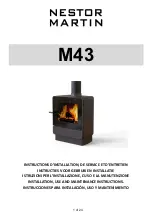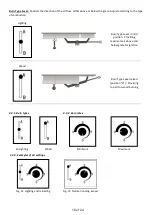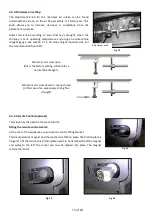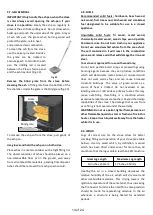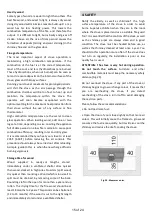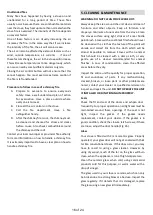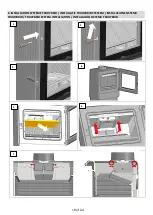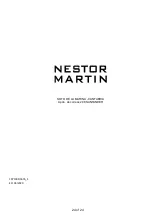
15 of 24
Use dry wood
Some types of wood are easier to light than others. The
best fire wood, and easiest to light, is always dry wood.
Using dry wood will minimise creosote build-up.D a m p
wood has far less hea�ng power. This lowers the
combus�on temperature of the fire, and therefore the
output. It is difficult to light, burns badly and gives off
smoke. Above all, the use of damp wood causes the
forma�on of deposits (tarring and soot staining) in the
chimney flue and on the glass door.
Flue gas temperature
The most important aspect of stove opera�on is
maintaining a high combus�on temperature. If the
combus�on of the fuel is at the correct temperature,
most of the soot and tars (hydrocarbons) are burned.
These hydrocarbons, when not burned, can be seen as
tar and creosote deposits on the internal surfaces of the
stove, glass and chimney surfaces.
Running your stove at maximum for prolonged periods
will chill the stove as the airs passage through the
combus�on chamber will be too fast to heat up and
maintain the temperature within the stove. The
operator will soon become acquainted with the
op�mum se�ng for the maximum heat produc�on from
their stove without the use of any surface or flue
thermometer.
High combus�on temperatures are the secret to clean
glass opera�on. When loading wood, add one or two
logs at a �me, depending on size. Loading the appliance
full of damp wood on a low fire is certain to cause poor
combus�on efficiency, resul�ng in tar and dirty glass.
It is recommended that you heat your stove to at least
205°C (400°F) before reducing the air controls. This
procedure should always be carried out a�er reloading.
A simple guide to this is when the new charge of fuel is
burning vigorously.
Storage �me for wood
Wood
supplied
in
ready-cut
lengths
stored
immediately under a ven�lated shelter dries quicker
than wood stocked in high piles. Quarters (split wood)
dry quicker than round logs. Wood which is too small to
split must be drained, by removing some of the bark.
Round logs le� in the open for more than a year end up
ro�en. The drying �me for the fire wood should be at
least 18 months to 2 years. This period can be shortened
(12 to 15 months) if the wood is cut to the right length
and immediately stored under a ven�lated shelter.
4. SAFETY
No�fy the elderly, as well as childrenof the high
surface temperature of the stove in order to avoid
burns. Supervise children when they are in the room
where the stove is placed and use a suitable fire guard
for it. It is essen�al that the controls of the stove, as well
as the chimney pipes are always clean and in good
condi�on. The stove must be checked before use, as
well as the chimney cleaned at least once a year. You
should do this opera�on more o�en if the stove does
not turn on regularly, the installa�on is poor or low
quality fuel is used.
ATTENTION: The stove is very hot during opera�on.
Do not touch the
surface.
Furniture and other
combus�ble materials must keep the necessary safety
distance (Fig. 24).
Do not overload the stove. If any part of the stove or
chimney begins to glow or change colour, it means that
you are overhea�ng the stove. If you detect
overhea�ng of the stove, turn it off to avoid damaging
the cast iron parts.
Please, follow these recommenda�ons:
• Do not load more fuel.
• Open the door of your stove slightly so that more air
enters. This will ini�ally cause the flames to grow and
consume the fuel more quickly, but it will also cool the
chimney and reduce the dra�, cooling the stove.
Fig. 24. Measures en cm.
Содержание M43
Страница 2: ...2 of 24 ...
Страница 19: ...19 of 24 7 8 9 10 ...
Страница 20: ...20 of 24 7 DIMENSIONS ...
Страница 22: ...22 of 24 ...
Страница 23: ...23 of 24 ...
Страница 24: ...24 of 24 SOTO DE LA MARINA CANTABRIA Apdo de correos 208 SANTANDER C07100DC676_1 ED 04 2020 ...

